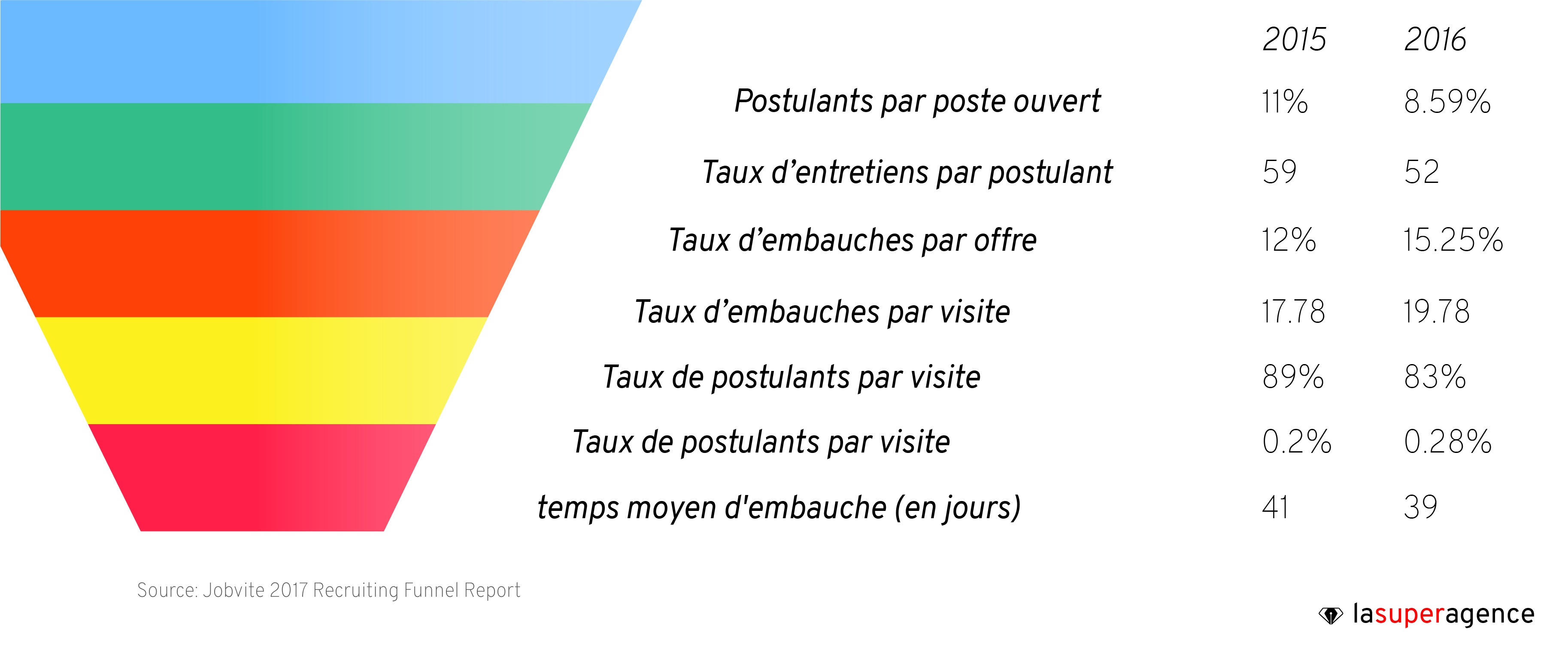While corporate marketing departments are slowly converting to Inbound Marketing, human resources, and in particular recruiting departments, are still struggling to begin their digital transformation. But things are changing rapidly.
Recruiters now understand that the lead conversion methods and process unique to Marketing can also be applied to the search for passive talent and candidates. With convincing results.
Here are 3 ways to think of recruitment as an inbound marketer :
1 - Think first and foremost about the needs of candidates!
With the rise of social networks and blogs, and with the multitude of digital communication tools, the customer journey is no longer linear than before.
Consumers today are becoming increasingly impervious to traditional marketing methods. They no longer listen to the same ad on the one radio station but use hundreds of different channels. So the content they will be exposed to will vary depending on the source.

When it comes to recruiting, some candidates will go directly to your careers page when others will prefer forums where former candidates or employees summarize their working conditions at your company.
According to the Online Marketing Institute, it takes between 7 and 13 exposures to content for a potential lead to become qualified.
For a potential candidate, it's the number of exposures to move them from passive to active, i.e., to consider filing their application. The lead does a whole lot of research on the company and to be successful the brand must be present at every step of that journey.
To do this, it is essential to identify the channels used by the potential candidate (social networks, search engines or publications) and to optimize the employer brand on them. The task, oh so difficult for the brand, is to be where the user is looking for it. This is called the defining Candidate Personas phase.
The strategy for the marketing team - and now the recruiting team - is to adapt its content and channels to the new ways consumers are making decisions online.
The strategy for the marketing team - and now the recruiting team - is to adapt its content and channels to the new ways consumers are making decisions online.
These numbers from Jobvite show once again that the candidate is indeed "king."
All too often, they launch a query for a job opening with their teams and their teams launch a search from scratch. If they had built a Inbound Recruiting conversion tunnel up front, the process would have taken less time and, more importantly, would have been far less expensive.
Marketing has undergone a real transformation from Outbound to Inbound and now it's time for recruiting to do the same.
2 - Give your Inbound Recruiting strategy time to prove itself

The most nerve-wracking part of launching an Inbound strategy - whether it's to attract leads or candidates - is starting with little or no content, an almost non-existent presence on social media and low Google ranking. The task can indeed appear insurmountable.
And this is often the reason why, many decide to ...do nothing.
It is true that starting the initial phase is the most difficult.
It takes a lot of effort to generate organic traffic and build a differentiating presence on Twitter (i.e., a presence that doesn't just promote promotional messages).
Many companies give up when faced with the difficulty of sustaining the effort over the long term.
This is also why the opportunities are immense for companies that persevere.
Gain after gain follows quickly for those who persist in'Inbound Recruiting. With the right strategy, growth can easily be measured in terms of followers, site traffic and conversions.
But it's a long-term job and requires a long-term commitment to start seeing rare talent ringing your doorbell.
3 - Use data to measure your progress

Marketers would never have been able to initiate a radical shift to inbound strategy without the data support.
When it comes to the Internet, almost everything is measurable: from Google Analytics, to Twitter, Facebook or Linkedin, almost any activity can be quantified.
This way, you can analyze your performance in near real time for an often paltry price. Yet, despite the ease of access to these resources and their potential, recruiters don't usually look at these numbers and use them to measure the effectiveness of the messages being delivered.
Many companies do very little research into the traffic to their Careers pages and thus their effectiveness. Nor are they able to identify where applications are coming from (although many tools exist to identify the origin of a click, most notably Hubspot).
Without this critical data, companies simply don't have the means to know what works and what doesn't with their digital strategy, towards their potential candidates.
Without the ability to show the relevance of one's efforts internally, it is tricky to come up with new ways and therefore the methodology does not evolve.
Meanwhile, the most interesting candidates went elsewhere.










